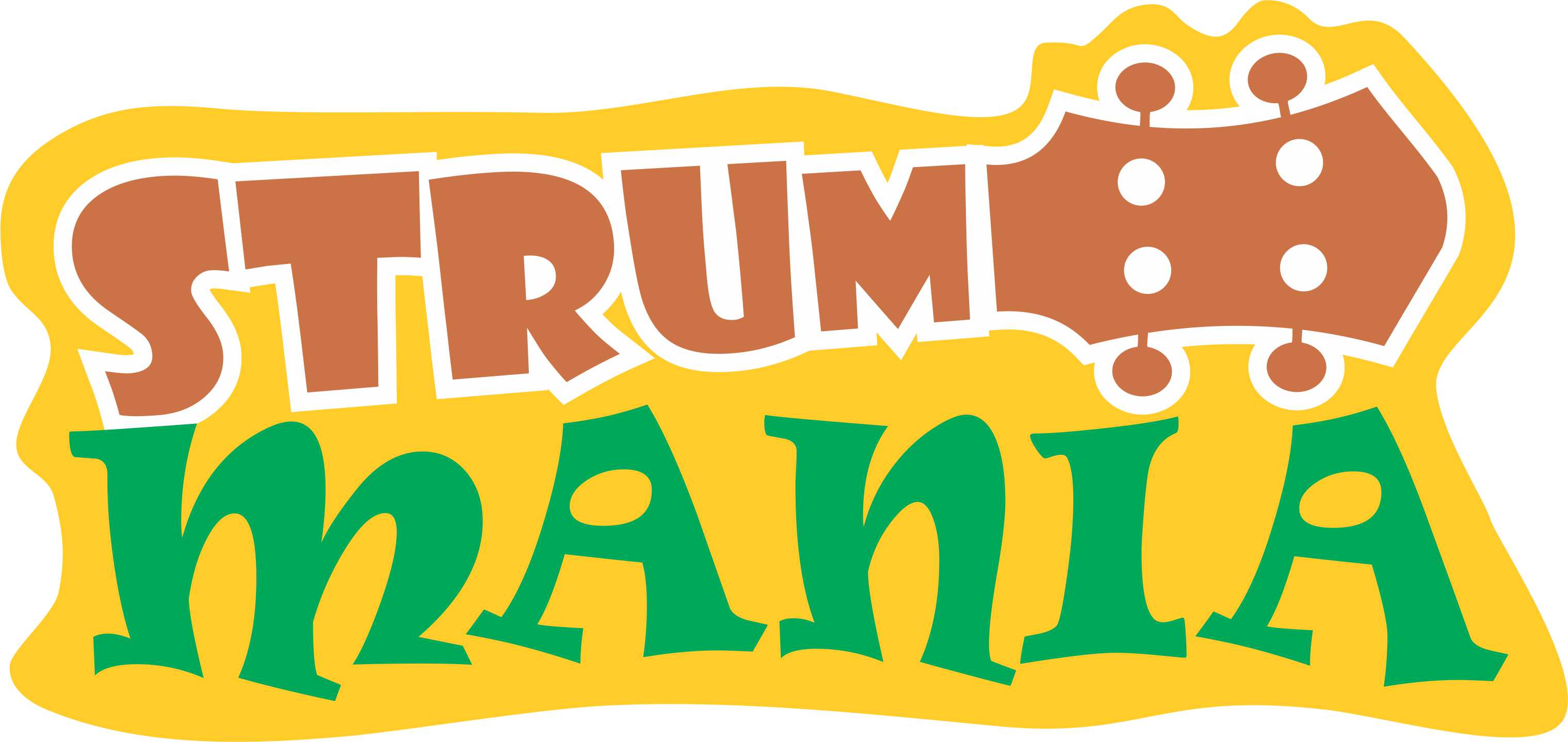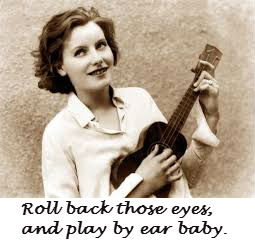


How to Play the Ukulele by Ear
Playing by ear is dead easy, all you need to do is to understand a few basic principles and apply them, by listening to
your playing. You will soon develop an ear for the chord changes and when they occur.
I’ll give you an example; Play the chords C for 12 strums and then G for 2 strums and then back to C 12. Do that a few
times. Now notice that when you go to the G chord there is a palpable increase in the tension, and when you return to
the C chord the music relaxes. So there you go, C is resolution, and G is tension when playing in the key of C.
Let’s look at that crusty old 3 chord favourite, Jamaica Farewell (you will find the song sheet down at the bottom of this
post.) This song is in the key of C.
You can see that it is a repetitive progression, C, F, G, C that repeats itself throughout the song.
Playing by ear relies on you recognising that each chord has a unique feel, which makes it easier to spot the changes.
What you chose to call this response that you have to each chord is up to you, but here are a few suggestions:
· The C chord is the root chord of the key of C and it has a feel of the home chord. In fact each verse and the
chorus starts and ends with the C chord. This is fairly common, a lot of songs start and finish with the root
chord of the key. This chord feels solid, like home and hearth.
· The F chord has been described as giving us a feeling of ‘stepping out’ or ‘sunshine’.
· The G chord gives us ‘tension’ and more often than not will lead us back to the root chord.
Play the progression a few times and see if you can perceive any difference. At first there may not be a difference to
your ear, but keep on with the exercise in different C/F/G songs that you are familiar with and you will soon develop
your own form of recognition.
Orrite, that is OK for C/F/G songs but what about the other keys?
Well, as it happens, the same principal applies to all keys, so in the key of G the three equivalent chords are C/F/G.
Here’s the tricky bit; the chord G is the home chord in G major and the tension chord in C major and in C major C is the
home chord and G is the tension chord, arrrgh. Here’s what we do; we number the chords, starting with 1 as the root
chord (C major the C chord is 1, F is 4 and G is 5. In G major G now becomes 1, C is 4 and D is 5. The basic three
chords in any key are 1, 4 and 5. Having established that, think of the chords as numbers, and now 1 becomes the
home chord, 4 is the stepping out chord and the 5 chord is the tension chord. When you play in any key, get into the
habit of thinking the numbers, 1,4 and 5 and what they mean to you.
Use the numbering system to work out what the three basic chords are in any key, count from 1, that chord is always
the key that the song is in, count up to the 4th chord and 5th chord and there you have it. Play the chords, but think in
numbers.
The numbering system is widely used by musicians, who often call out the chord progressions by numbers. If they
decide to play in a different key then everyone can work out the chords.
A bit tricky at first, but persevere and you may well get it. If all else fails try a couple of Skype lessons with Bill or Trisha.
Jamaica Farewell
F G C
Intro C////F////G////C//// as per first 2 lines of song
Verse 1:
[C]Down the way, where the [F]nights are gay
And the [G]sun shines daily on the [C]mountain top
[C]I took a trip on a [F]sailing ship
And when I [G]reached Jamaica, I [C]made a stop.
Chorus:
But I'm [C]sad to say, I'm [F]on my way,
[G]Won't be back for [C]many a day,
My heart is down, my head is [F]turning around
I had to [G]leave a little girl in [C]Kingston town.
Verse 2:
[C]Sounds of laughter [F]everywhere
And the [G]dancing girls sway [C]to and fro,
I must declare, my [F]heart is there,
'Though I've [G]been from Maine to [C]Mexico.
Verse 3;
[C] Down at the market [F]you can hear
Ladies[G] cry out while on their[C] heads they bear
Ackee rice, salt [F]fish are nice
And the [G]rum is fine any [C]time of year
